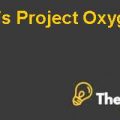Investment Policy at New England Healthcare Case Study Help
Rationale for Pension Fund and Long Term Pool
Pension funds
In order to deal with the pension funds for the employees, the pension liability for both cash balance pension plan as well as final salary pension plan needs a straightforward consideration to determine which pension funds would lead to increased pension liability on NEH in the near future.
The amount of assets that the Westside Hospital final salary pension plan had amounts $500 million. For the Westside Hospital Final Salary Plan, the accumulated benefited obligation (ABO) or thepresent value of the accrued pension benefits is approximately 400 million dollars whereas the projected benefited obligation (PBO) or the present value of the accrued pension benefits given various assumption including projected increase in salary and other assumption with regard to employees in the near future is approximately 450 million dollars.
Likewise, the amount of assets that the Eastside Hospital cash balance pension plan had amounts $600 million. For the Eastside Hospital cash balance pension plan, the accumulated benefited obligation (ABO) or the present value of the accrued pension benefits is approximately 500 million dollars whereas the projected benefited obligation (PBO) or the present value of the accrued pension benefits given various assumption including projected increase in salary and other assumption with regard to employees in the near future is approximately 550 million dollars.
The consideration of the liability is of paramount importance in order to assess whether the company should consider the projected benefited obligation or the accumulated benefited obligation for the benefited plan of employees in which the benefits would be guaranteed to employees. The pension liabilities is calculated for both projected benefited obligation and accumulated benefited obligation by deducting the fair value of the plan assets under final salary pension plan and cash balance pension plan from each projected benefited obligation and accumulated benefited obligation.
The pension liability under Projected Benefited Obligation (PBO) for the Westside Hospital final salary pension plan amounts 50 million dollar whereas the pension liability under Accumulated Benefited Obligation (ABO) for the Westside Hospital final salary pension plan amounts 100 million dollar. Similarly, the pension liability under Projected Benefited Obligation (PBO) for the Eastside Hospital cash balance pension plan amounts 50 million dollar whereas the pension liability under Accumulated Benefited Obligation (ABO) for the Eastside Hospital cash balance pension plan amounts 100 million dollar.
The pension liability for both Eastside Hospital cash balance pension plan and Westside Hospital final salary pension plan underProjected Benefited Obligation (PBO) is lower than the pension liability calculated under Accumulated Benefited Obligation (ABO), which shows that the most comprehensive definition of the pension liability is the Projected Benefited Obligation (PBO) due to which the company should value its pension liabilities by its projected benefited obligations.
Long Term Pool Funds
In contradiction to the pension funds, the company should achieve the optimal asset allocation in the long term pool funds by making considerable amount ofinvestment in the fund that is less risky and would generate higher yields in the future. The ideal allocation of the assets should be the mix of the investment from most aggressive to safest that would earn desirable return over time. The company should invest in the equities because of the higher return associated with these funds, however the risk is also high but the members of the treasury committee should be optimist about the future return of the fund. Additionally, the company should allocate assets to the high yield fixed income to generate higher returns in future. Moreover, the company should also invest in the hedge funds as it promises the desirable return over time and the amount that should be invested in the short and long hedge fund ranges between $500000 and $1 million. In order to avoid any future constraint, the company should assure that all requirements related to the investment in funds laid down in the Rule of Trust are appropriately implemented. Also, the financial statement of both funds needs to be audited in timely manner.
Conclusion
New England Healthcare aims to provide the integrated healthcare system from which the patient could be able to get the complete range of the primary, secondary and tertiary healthcare services.The company had insufficient average cash flow margins to fund the significant programs for improving capital due to which NEH as well as other healthcare institutions relied on the philanthropy and projected based debt financing for the capital needs.
The pension liability for both Eastside Hospital cash balance pension plan and Westside Hospital final salary pension plan under Projected Benefited Obligation (PBO) is lower than the pension liability calculated under Accumulated Benefited Obligation (ABO), which shows that the most comprehensive definition of the pension liability is the Projected Benefited Obligation (PBO) due to which the company should value its pension liabilities by its projected benefited obligations. The company should achieve the optimal asset allocation in the long term pool funds by making considerable amount of investment in the fund that is less risky and would generate higher yields in the future................................
This is just a sample partical work. Please place the order on the website to get your own originally done case solution.











